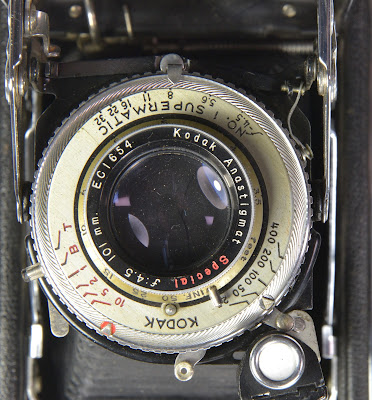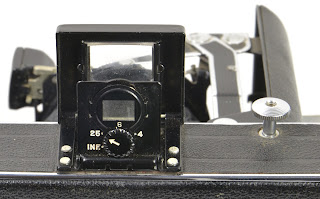Ever since we moved to western North Carolina, I have been interested in exploring and photographing many of the small towns that are in the surrounding counties. However, once I found out there was a town in Tennessee named Kodak, I knew that I had to visit it to satisfy my curiosity, sort of like when I went to Mongo, Indiana in 2018. So, after yesterday, I can delete Kodak, TN from my bucket list.
First, you may wonder how the town came to be called Kodak, since Kodak is an invented word by George Eastman. In 1892, the postmaster Harvey N. Underwood, learned of the new "Kodak" brand of camera. Underwood decided that this was a name that was easy to remember and spell, hence he sought permission from George Eastman, to use this name for his village and its post office. Eastman granted this permission. I am pretty certain that the original PO building is now a real estate office. So, here we are with Kodak Road, which alone is a pretty good name.
 |
| Possibly the original site of the Kodak PO. |
So, for the summer solstice of 2023, I decided that I would do a day trip to Kodak, photograph places with the name Kodak on them, and do my usual meandering road trip. When I started out a little after 8:30, the weather was overcast with light rain, and taking US-25 from Weaverville, made for a scenic ride. US 25 passes through Hot Springs, as does the Appalachian Trail. I’ve visited Hot Springs several times, and it sits along the French Broad River, which US-25 crosses several times in Tennessee. At the TN/NC state line, I stopped to photograph an old sign for the State Line Cafe, which has been replacaed with an antiques store. US 25 25 took me through Newport, TN, where I found this lovely old store along Lincoln Avenue. I was supposed to meet up with Donna Moore to receive a bunch of cine film and odd lenses, so we met in the parking lot of the BassPro/Cabela’s store off of I-40W. The entire region is geared towards tourists, as the Great Smokey Mountains are not far off, and neither is Pigeon Forge, Dollywood and Gatlinburg. Sevierville is adjacent to Kodak, and parts of Kodak have been incorporated into Sevierville. The main roads are definitely lined with places that cater to the tourists, except in Kodak proper.
Kodak Road turns into Dumplin Valley Road, which feeds into TN State Route 66, which is also called the Winfield Dunn Parkway. That’s where the preponderance of business have the word Kodak, including the Kodak Post Office, which dates from the 1989.
Driving around the many back roads in the area reveals the rural character and agricultural nature of the businesses. However, as is typical, there are housing developments being carved out if the farmland. The original center of Kodak is a four-corners without a traffic light. The brightly colored Kodak Trade Center is probably the most notable of buildings. I wonder how much has changed since Kodak was founded in 1892.
I had originally planned to shoot a Kodak camera with Kodak film while in Kodak, but the weather was more suited to pulling out a Nikon D300, while dodging the rain drops. I think I managed to hit most of the highlights. I also finished up a roll of Derevpan 100 in my Nikon F3HP.
On my return trip, I went S on TN 66 to US-411, which eventually took me to I-40, and back to Asheville. US-411 is also an interesting drive, as it’s named the Dolly Parton Parkway in Sevierville. There is a Bush’s Beans plant on that route, and it has a visitor center that was closed by the time that I arrived.
 |
| I wonder if real hillbillies get tired of their portrayal? |
 |
| That's a LOT of beans |
 |
| Bush's factory. |
It was a lot of driving for the day -- the twisty mountain roads eat up a lot of time and not as much distance as those road trips that I used to take in Michigan, Ohio, and Indiana. But, it's NEVER boring!
I suppose my next trip that's Kodak-related should be in Kingsport, TN, where Eastman Chemical was located. That's a little over an hour from my house.
































